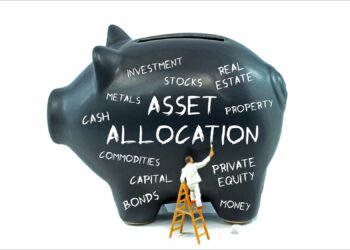A paper we wrote early last year highlighted that the risk of rising inflation and higher interest rates could be a catalyst to drive focus back to company fundamentals and be supportive for our ‘quality at a reasonable price’ investment strategy.
At the time of writing the paper, we had seen a short-term market rotation into some of the deeper value and cyclical segments of the market, along with ongoing exuberance in many non-profitable growth and thematic stocks, which had contributed to short-term underperformance for our strategies relative to our benchmark. As the year unfolded, we saw the market mindset shift back towards rewarding underlying company fundamentals and as a result each of our global equity strategies performed strongly in 2021.
As expectations for inflation and interest rates have continued to evolve over the past 12 months, we thought it was worth providing an update on the current market environment, along with reasons why we continue to believe that our ‘quality at a reasonable price’ investment approach remains well positioned to outperform.
INFLATION
Inflation has so far proven to be stronger and more persistent than many anticipated at the start of 2021.
The February 2022 US CPI rose 7.9% from a year earlier, the fastest pace since 1982. Core US CPI (which excludes food and energy) increased 6.4%, the strongest rise since 1982.
It is a similar story across other parts of the world, including the UK where the annual inflation hit 6.2% in February, the highest rate in 30 years, and the Eurozone where inflation reached a record high of 5.9% in February.
The Russian invasion of Ukraine has further exacerbated the supply chain pressures and inflationary forces across the world, likely keeping inflation at elevated levels for longer than previously anticipated. This is reflected in the US 5-year breakeven inflation, which has climbed to 3.4%, from 2% at the start of 2021.
The US unemployment rate has reduced significantly from 6.7% in December 2020 to 3.6% in March 2022 and the tight labour market is contributing to significant wage pressures and staff shortages across various industries, which is likely to persist for some time to come. Input cost pressures also continue to bite, with the S&P GCSI Index, which tracks a basket of over 20 soft and hard commodities including oil, gas, gold, copper, aluminium, wheat, corn, cotton, cocoa, cattle etc., increasing another 53% since the end of March 2021 and up 65% compared to the start of 2020.
INTEREST RATES
This time last year the consensus view was that we wouldn’t see US interest rate hikes until at least 2024. However, the strong macro conditions and increasing inflation pressures are forcing the hand of the US Federal Reserve and other central banks around the world to act earlier than previously expected.
The US Federal Funds rate was hiked by 25 basis points at the March 2022 meeting and the projection is that we will see a further 10 quarter point rate hikes by the end of 2023 to 2.75% – as indicated by the Fed’s dot plot which outlines the forecast trajectory of rate increases.
In addition to rate hikes, the Fed recently indicated it will start to shrink its balance sheet by letting some maturing bonds ‘roll off’ without reinvestment, at a maximum monthly pace of $60 billion in Treasuries and $35 billion in mortgage-backed securities.
This process of quantitative tightening is likely to put further upward pressure on long term interest rates, which have already seen a sharp rebound in recent months. For example, the 2.77% yield on US 10-year Treasury note is now well above pre-COVID levels, and pushing back towards the 10-year peak in late 2018. This is flowing through to borrowing costs such as the important 30-year fixed mortgage rate in the US which recently pushed back above 5%, the highest level since 2010, after starting the year at 3.3%.
IMPACT ON STOCKMARKET POSITIONING
As the focus on inflation and interest rates continues to intensify this is likely to have flow on effects to various parts of the stockmarket. The end of ‘easy money’ and higher interest rates has already contributed to some of the heat coming out of the more speculative areas of the market, translating into material declines in the share prices of many non-profitable growth and thematic stocks which had risen to unsustainable levels and were largely ignoring the risk of rate rises. For example, the Goldman Sachs non-profitable technology index has pulled back over 50% since the February 2021 peak, after an exceptionally strong rally during 2020.
The heightened inflation expectations and growing concern for further interest rate hikes has also led to a recent rotation back into many of the perceived beneficiaries including commodity producers, banks and many cyclical industrials which typically sit within the ‘value’ segment of the market.
As we outlined last year, this type of rotation is typical for what we would expect during the early stages of a cyclical recovery, although it often results in a ‘rising tide lifting all boats’ where many companies in the more rate-sensitive sectors rise in tandem regardless of their quality or underlying fundamentals. Our focus on investing in quality companies means that our portfolios could potentially lag the market during this initial rotation but historically any underperformance has been relatively short lived.
We would argue that as we move forward many of the ‘value’ companies are much more susceptible to earnings risk than ‘quality’ companies, given that ‘quality’ companies tend to have better margin profiles, stronger pricing power, more robust free cashflow and less balance sheet leverage, which are important attributes when inflation is running rampant, rates are rising and economic growth likely decelerates.
As the dust settles, we would once again expect investor focus to shift back towards the quality of the underlying businesses and their valuations. Ultimately, earnings will be the key driver of shareholder returns over the long term and ‘quality’ companies with more durable earnings growth will be best placed to reward investors, in our view.
GROWTH vs VALUE
The ‘growth’ versus ‘value’ debate is often a key focus for investors and understandably so given this can be a key driver of returns for many investment strategies. After many years of outperformance from growth assets, the prospect of higher interest rates increases the risk of valuation compression for certain growth assets which have much of their value predicated on long-dated cashflows.
While quality investment styles are often tilted towards growth, we would note that the implementation of our quality at a reasonable price (QARP) investment approach is designed to provide a more balanced exposure to a range of quality companies with both growth and value characteristics, albeit we tend to have little exposure to companies at the extreme ends of the spectrum (i.e. deep value cyclicals or excessively expensive or non-profitable growth stocks).
The ultimate aim of our QARP approach is to generate more consistent investment returns through different market conditions irrespective of which style may be outperforming.
For example, during 2021 we saw some extreme short-term divergences between value and growth, in both directions. Using the MSCI World Value and Growth Indices as proxies, we saw value outperform growth by 5.0% in March and by 4.5% in December. At the other end of the spectrum, growth outperformed value by 6.0% in June.
During each of these months, our Global Core, Select and SMID strategies all outperformed their respective benchmarks, demonstrating the ability to deliver good performance outcomes regardless of whether growth or value may be in vogue.
OUTLOOK – WHY QARP IN 2022 AND BEYOND
Predicting exactly how the macro environment and investment markets play out over the next 12 months is a difficult task. On the positive side of the equation, GDP growth across many regions of the world is strong, unemployment rates are low, consumer balance sheets are in good shape and interest rates remain low by historical standards.
However, there are a range of headwinds that could weigh on markets including the threat of persistently high inflation and likelihood of interest rate hikes, the ongoing uncertainty created by geopolitical events and any new COVID-19 variants, the negative impacts from supply chain disruptions, risks associated with the removal of various stimulus measures, and the real threat of a deceleration in global economic growth.
Overall, we believe that 2022 will likely be a year where investors will finally start to factor in more risk within their investment decision making, after a number of years where many risk factors had arguably been ignored. This type of environment is ripe for our QARP investment approach to be rewarded.
We will continue to work hard to construct a portfolio of quality companies with key attributes such as good pricing power, strong balance sheets, durable earnings growth and highly-visible cashflows, and less exposure to companies with high valuation risk.
We believe having exposure to companies with these attributes has been a key reason why we have been able to outperform during historical periods of rising inflation and interest rates and we have no reason to believe this time will be any different.
Joel Connell is senior global equities analyst at Bell Asset Management.





